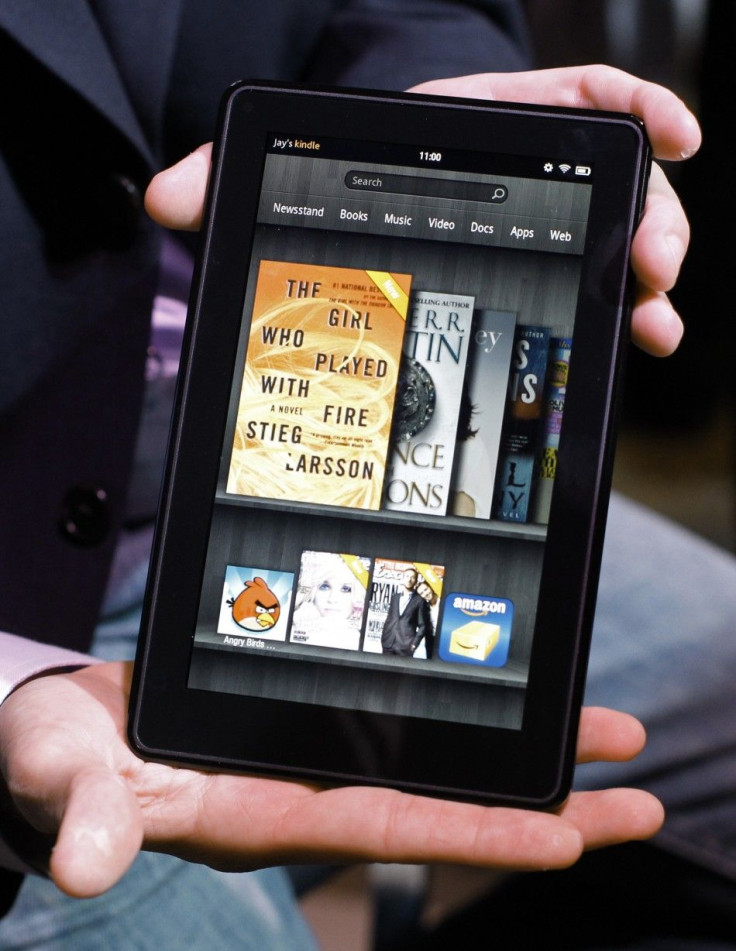Amazon Kindle Fire: Sold at a Loss, 'People's Tablet' Isn't a Paragon of Versatility
ANALYSIS

Because the Amazon Kindle Fire's low price of $199 makes it more accessible than its competitors, ZDNet's Jason Perlow called it the People's Tablet. But early experiences indicate the tablet, available for sale in stores such as Best Buy this week, is not all that great as a reader.
According to multiple reports, it is not as easy to read certain material on the Kindle Fire as it is on other Kindles. The 7-inch screen is fine for reading books, but for reading newspapers and magazines, it appears a bit small. This is an area where rivals such as the Apple iPad 2 and Samsung Galaxy Tab score over the Kindle Fire. The iPad 2 features a 9.7-inch display, and the Galaxy Tab offers a 7.7-inch display.
Thanks to its attractive price tag and links to a thriving online retail network, Amazon's gadget has drawn positive reviews. However, the device still lacks a camera, microphone and other typical bells and whistles that make it less versatile than either the iPad 2 or the Galaxy Tab.
Analysts expect that 4 million to 6 million models of the Kindle Fire will move during the crucial holiday quarter, according to Reuters.
It's a good -- though not a great -- product, and a very good value, Walt Mossberg wrote in The Wall Street Journal. But the Fire's hardware is plain and clunky. It's a thick black box with zero style.
I suspect the Fire will appeal to people on a budget and to those who envision using the iPad mainly to consume content, Mossberg added.
If you want to use it as a browser, you will be a bit disappointed as you can't punch it and roar down the Information Superhighway as fast as you can with the iPad 2. However, it is quite satisfactory, assuming you consider the Kindle Fire to be an e-reader that can also browse and play videos, TV shows, movies and music.
A Loss-Maker?
The Kindle Fire tablet costs less than the amount required to make it, the IHS iSuppli Teardown Analysis Service estimated Friday, emphasizing the aggressiveness with which the retail giant tried to rein in the cost of a device that leads its entry into the tablet market.
According to the market-research firm, the total cost of components of the device adds up to $185.60. Once the cost of assembly and manufacturing is factored in, the total cost of making comes to $201.70, which is $2.70 more than Amazon charges for the tablet.
The analysis by IHS iSuppli indicates that Amazon is initially selling the tablet for less than half the price of Apple's cheapest iPad with the intention of making it a vending machine for the videos, music and books it sells online, Reuters reported.
In September, Amazon.com Inc. CEO Jeff Bezos said the company wanted to make a small profit from the hardware, but, as a retail company, it was willing to live with a smaller margin than most electronics companies would.
However, in recent quarters, the retailer's already-thin profit margin has fallen even more, and some analysts are doubtful about Amazon's digital-media thrust. They believe that consumers are unlikely to purchase music or other media content again to stock their Kindle Fires.
The total production cost of the Kindle Fire, estimated by IHS iSuppli, doesn't include the costs of development, marketing, or packaging. The 7-inch (17-centimeter) color touch screen, supplied by LG, is the costliest part of the Kindle Fire. Costing $87, it accounts for nearly one-half of the total material cost.
According to the research firm, the cost of making a basic iPad 2 model is just under $300, while Apple sells it for $499. Thus, it makes an average gross margin of more than 50 percent on its tablet, with 20 percent to 40 percent being the industry average.
To report problems or to leave feedback about this article, e-mail: k.bora@ibtimes.com
© Copyright IBTimes 2024. All rights reserved.






















